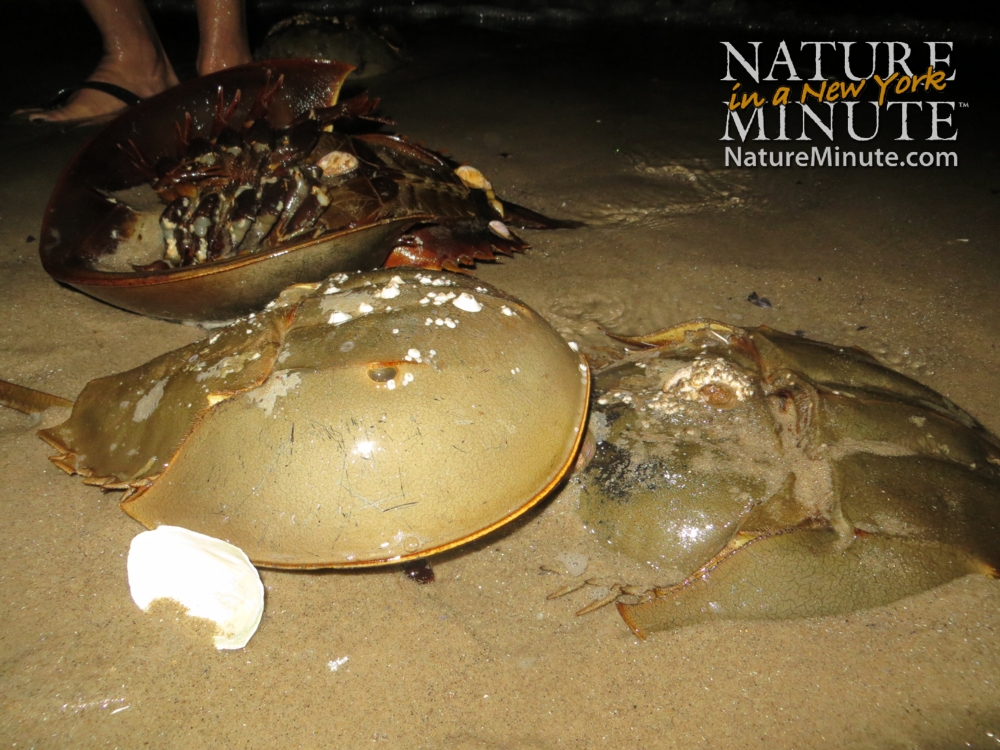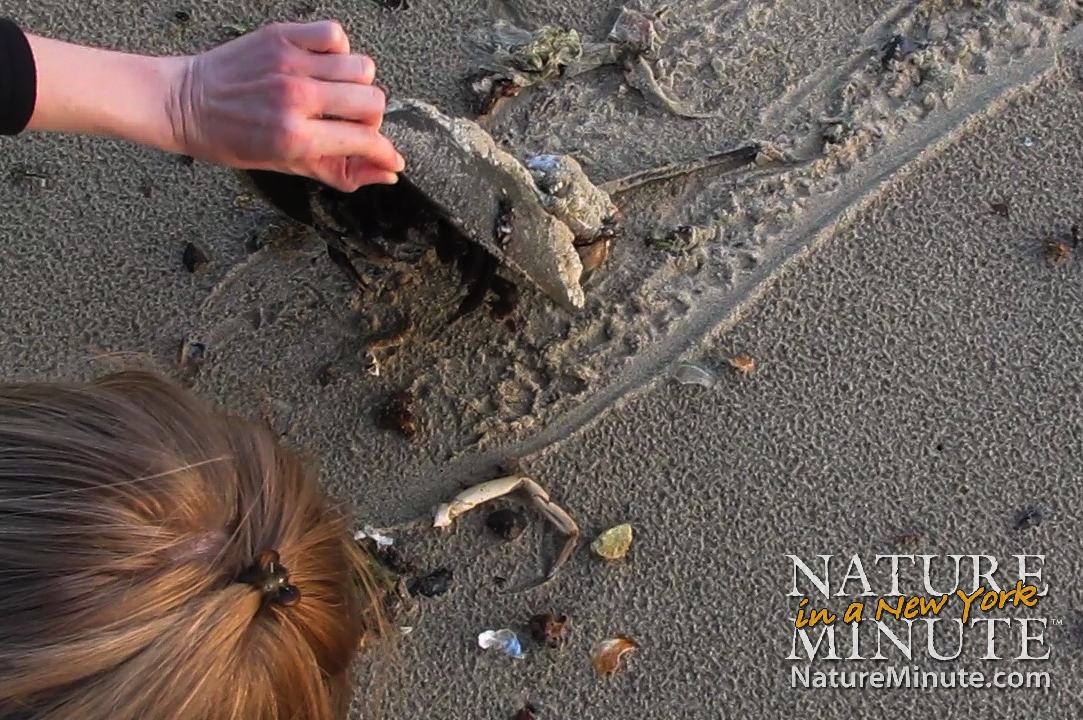 New Yorkers, if you go to the beach tonight, you might witness some hanky-panky involving a lot of grabbing and intertwined...carapaces? Of course you know I mean spawning horseshoe crabs. Every May and June, during high tide around the new and full moons, these ancient creatures (as in they haven't changed much for >300 million years) migrate from the depths to lay and fertilize their eggs on certain beaches. And guess what, we're skirting around a full moon this week, folks.
New Yorkers, if you go to the beach tonight, you might witness some hanky-panky involving a lot of grabbing and intertwined...carapaces? Of course you know I mean spawning horseshoe crabs. Every May and June, during high tide around the new and full moons, these ancient creatures (as in they haven't changed much for >300 million years) migrate from the depths to lay and fertilize their eggs on certain beaches. And guess what, we're skirting around a full moon this week, folks.
To see it, horseshoe crabs actually kind of get swept in with the surf. Now if you're picturing From Here to Eternity, I'm sorry to say there's no kissing involved, but the males do grab onto the female and hold on for dear life. (Seen above, a male hangs onto to a female who is partially buried - the better to lay eggs.) Sometimes both end up on their backs. But never fear, there are volunteers present to help  them get back on their feet. I'm one of them, and no, it's not kinky.
them get back on their feet. I'm one of them, and no, it's not kinky.
I'm volunteering with a team from NYC Audubon as they participate in the NY Horseshoe Crab Monitoring Network. We survey how many male and female horseshoe crabs we see, (flip them over if needed), and then tag them. If any of the tagged critters are recaptured, scientists can estimate how many spawned, plus get information on survival rate and migration habits.
Why is it important to help the horseshoe crab survive and thrive? One reason is the hugely important role they serve in the beach and marine environment. Each mature female lays something like 80,000 eggs each season, and they are mighty tasty to endangered sea turtles, fish, and migratory shorebirds. (Just check out how critical they are to the Red Knot, which is one cool critter itself.)
 So if you're walking down the beach this spring and see one, or an orgy, of these creatures, no need to avert your eyes. You are witnessing an important event in the web of marine life. Hey cheer them on. Wish them well. Even flip them over if needed - gently!
So if you're walking down the beach this spring and see one, or an orgy, of these creatures, no need to avert your eyes. You are witnessing an important event in the web of marine life. Hey cheer them on. Wish them well. Even flip them over if needed - gently!
For more Nature in a New York Minute articles and videos, join us at www.NatureMinute.com.